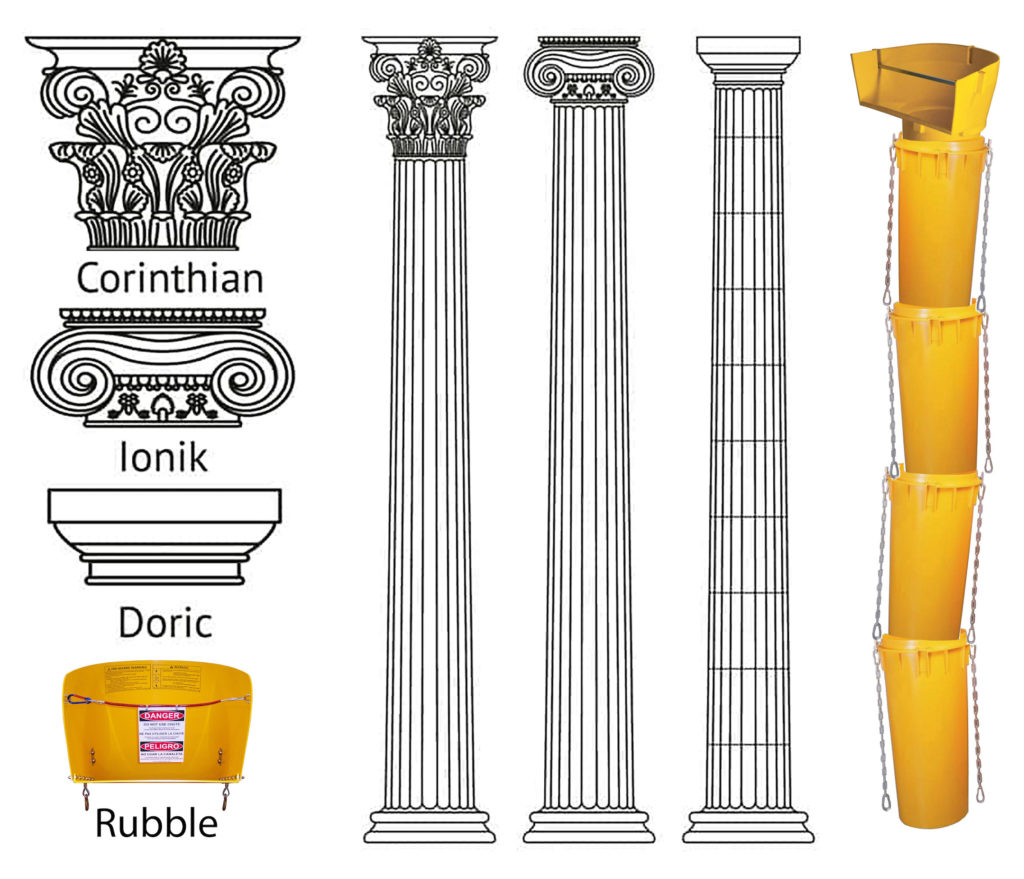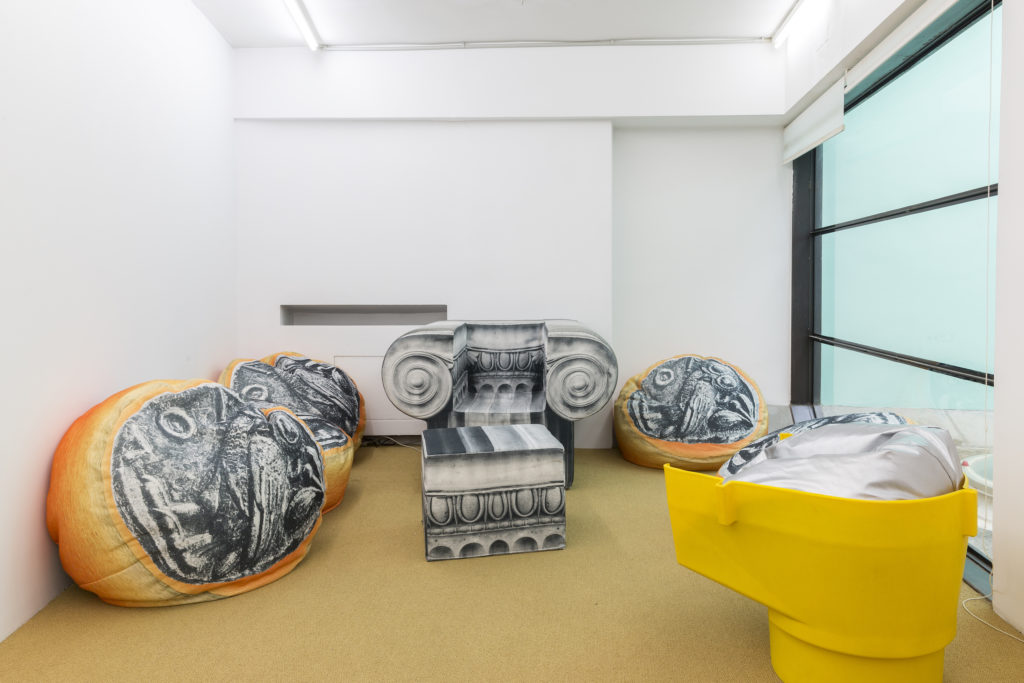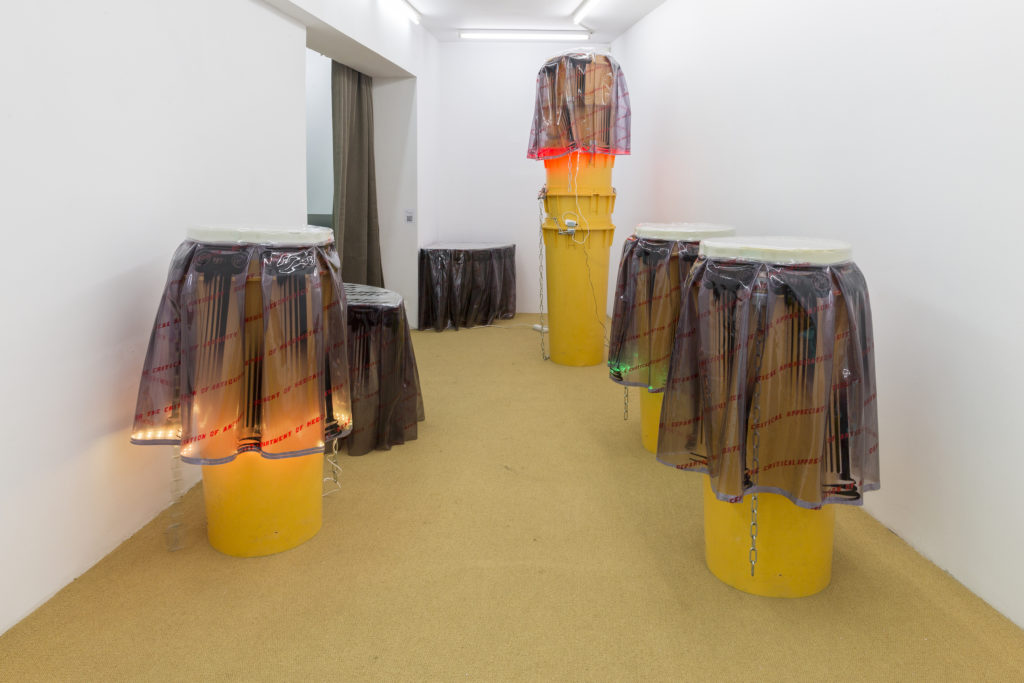Andreas Angelidakis
Rubble Chute Order
June 8, 2023–August 31, 2023The Breeder Studyroom, Athens
The Breeder Studyroom is a new initiative, an allocated space inside the gallery building, where each respective artist sets up a studyroom to share part of their creative process with the audience of the gallery. First studyroom resident was Chioma Ebinama, during her solo exhibition at the gallery, in May 2023. This time Andreas Angelidakis takes over the space to present The Rubble Chute Order.
The Rubble Chute Order is a project that has been developing inside other projects, such as exhibitions, installations, and so on, finding opportunities to conceptually attach itself to structures of understanding. The project tells the story of a group of plastic rubble chutes which got together in the summer of 2015, when Greece got kicked out of Europe. The summer of referendums and huge lines at the ATMs.
These rebel chutes were working to empty out the insides of old buildings, to be then renovated and used as Airbnbs. That was the only construction happening in Greece for many years, and so the chutes decided to form their own order of architecture. Just like the orders before them, they were named after the tribes who used them, the Dorians, the Ionians and the Corinthians.
This was what the Rubble Order meant to us, the people who were deminished to trash by their governments and banking system.
The first instance of the rubble chutes attempting to be presented as an architectural order took place at the Breeder Gallery in the summer of 2018, during Andreas Angelidakis’ solo exhibition A Submissive Acknowledgement of Powerlessness. In that exhibition, they formed two discrete columns in the back of the ground floor. Nobody seemed to mind or even recognize that these chutes, basically construction grade and reusable trash bags, were now serving greek column realness.
After that first successful venture into self transformation, the chutes really felt like they had done the job, because right after Angelidakis’ show at The Breeder, they were invited to be presented as real Columns in a real Building in Germany; the outdoor museum of art columns, STOA 169. The chutes would be Angelidakis’ version of a Greek Column, installed permanently in a grassy field in wealthy Germany, posing as architecture amongst their “new friends”, a motley crew of columns made by artists.
This level of success actually made the rubble chutes realize that life was not only worth living as a series of achievements, but that they could learn from their past and discover their essence. The order would still exist, although the chutes would have the chance to search for their lost self.
Some of them decided to be more social and were therefore invited to be part of Andreas Angelidakis’ center for the critical appreciation of antiquity. There, together with a series of dressed up catering stools, they became cocktail tables with clear vinyl skirts that lit up, or exhibition plinths with the same skirts, carrying sculptures over them, instead of drinks. Other chutes insisted on the idea of a column, but by then Angelidakis was thinking of columns as places to isolate oneself, just like stylite monks had been doing for centuries. Eventually they found a solution; for every piece on top of a rebel chute from where the trash is fed into the tube – let’s call it the pediment- became the perfect armchair for a stylite monk to sit comfortably.
This story is about a small group of rebels that decided to change their future. But many others are still out there working, serving an economy that has fucked up these buildings. The Airbnb chutes have become one with the buildings, like the plastic prolapsed butt hole of a polykatoikia after being severely fist fucked by the Greek and European banks.
Still, the small group of rebel rubble chutes that turned to art and architecture has become an inspiration for others to follow.
– Andreas Angelidakis, 2023
These works are part of a commission by Audemars Piguet Contemporary
Andreas Angelidakis (B. 1968) lives and works in Athens. Trained as an architect with a Bachelor of Architecture from the Southern California Institute of Architecture and a Master’s degree in Advanced Architectural Design from Columbia University, he maintains a multi-disciplinary practice as architect, artist, curator and writer centered on research and exhibition, often examined through the lens of the internet.
Angelidakis has consistently challenged the end-product of architectural practice by reversing the representation-to-realisation sequence of the production of buildings. He often starts with an existing building, producing models, films, ruins, installations or alternative histories, blurring fact and fiction and smoothing out the borders between the real and the virtual. He has contributed as an artist or curator in a range of global exhibitions including: The State of the Art of Architecture at the inaugural Chicago Architecture Biennial, the 12th Baltic Triennial at the Contemporary Art Center in Vilnius and Super Superstudio at PAC Milano, all in 2015, as well as “documenta14” in Athens and Kassel in 2017. In 2019, he participated in the Bergen Assembly, contributing a multifunctional social seating system to Paul B. Preciado’s _Parliament of Bodies_for documenta14, as well as the Biennial of Moving Image at OGR in Torino. Among the exhibitions he has curated are The System of Objects at Deste Foundation in Athens, Super Superstudio at PAC in Milano, Fin de Siècle at Swiss Institute in New York, Period Rooms at Het Nieuwe Instituut Rotterdam, and OOO Object Oriented Ontology at Kunsthalle Basel.


